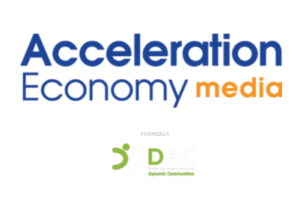Community Summit 2023 DEI&B Panel Debrief: Allyship, Hiring and Retention Tools, Unconscious Bias
In this Special Report, Dynamics Communities Editor Cam Sessinger speaks with the Community Summit North America 2023 Diversity, Equity, Inclusion, and Belonging (DEI&B) Panelists Taylor Dorward, Lindsay (LMG) Millet-Glass, and Meron Gebremedhin, and Moderator Liz McGlennen.
While on-site at Community Summit North America 2023, the Panelists addressed questions that attendees were submitting in real-time, through an online polling tool, Mentimeter. Being that the discussion was only 60 minutes, time ran out before all questions could be addressed. As such, the group got together to discuss the remaining questions, including:
- What can allies do to foster DEI&B in our workplaces?
- How can we use our finance systems to track the metrics of our business partners (i.e. are our vendors women-owned, etc)?
- How would you recommend assisting upper management with realizing they have an unconscious bias?
- What other tools would you recommend for hiring, retention, and support?
- How do we encourage our employers to speak out on DEI&B issues and social justice causes?
Highlights
02:20 — Panelists introduce themselves. While he was unable to join the post-panel video discussion, Will McLendon also participated in the DEI&B Panel, which took place at Community Summit 2023 on Thursday, Oct. 19., at the Legends Stage.
07:43 — What can allies do to foster DEI&B in our workplaces?
“Allyship is such an actionable thing,” notes Lindsay. “It comes through in [our] actions.” You need ally voices to be heard in all areas in order to make change happen, which puts emphasis on the importance of the role. For anyone looking to become an ally, “it’s all about actively promoting and aspiring to advance the culture of inclusion, and it’s only done through intentional, positive, and conscious efforts that benefit people as a whole.”
10:56 — Addressing the same question, Liz notes how at the surface, allyship can seem overwhelming. What does it mean, and where do I start?
There are small, day-to-day actions someone can take, but there may also be allies looking to make a bigger impact. “What do you have extra capacity in? And maybe seek out an organization or a community and focus on one area that you feel more drawn to or passionate about,” explains Liz. If you want to take it a step further, “I would encourage people to just do the research.” For more resources on allyship and becoming an ally, check out the blog “Right Up My Allie.”
12:21 — Taylor agrees with the idea of continuous education. As it relates to accessibility, for example, “It’s a great thing to educate others on why it’s important. But I think it’s also really important to tell them how they can get started.” Meron elaborates on the importance of creating a safe environment for allies. “To implement this, you need a safe environment for allies to come to the front and show their support.”
15:12 — What other tools would you recommend for hiring, retention, and support?
Liz recommends Workleap Officevibe, which is a tool that captures anonymous employee survey data relating to engagement, retention, and performance management.
When using this tool as a manager, Liz adds “I thought it was really helpful because it kind of randomized different questions at different themes, so it really gave me real-time insights on how my team was feeling, and it really enabled managers to take a proactive approach to being intentional about culture.”
18:17 — Adding to that, Lindsay notes that “I would really encourage organizations to not get lost in the tools.” If there is not a wide adoption of the tool, and it’s not used consistently, then it becomes for naught. Instead, the tool is just for “specific people who feel safe enough to share.”
19:09 — As it relates to hiring practices, Meron explains that there are not many tools for reducing bias during the process. “When bringing people on board, you need to trust the process. Let’s give serious consideration when we review their resume. We were impressed [with] their skill set, let’s give them a chance.”
26:28 — How would you recommend assisting upper management with realizing they have an unconscious bias?
Meron shares examples of times she has faced unconscious bias from her employers or colleagues in the workplace.
Liz adds that it’s important to reiterate that “we all have unconscious bias…I think the important thing is realizing it, and being intentional about how you approach the situation, the future, and being open to that growth, learning, and changing the mindset.”
Similarly, Taylor adds that unconscious bias “is uncontrolled… it just depends on how you act on it. And I think that’s important to realize.”
33:33 — How do we encourage our employers to speak out on DEI&B issues and social justice causes?
“As an employee, I think it’s really important to evaluate the organizational culture and find something that’s in alignment with your core values,” explains Liz. It is important to evaluate your employer in the same way they are evaluating you.
37:13 — How can we use our finance systems to track the metrics of our business partners (i.e. are our vendors women-owned, etc)?
Going back to the notion of education, Taylor adds that “making people aware of what companies are female-owned and more diverse… just making them aware and promoting what’s out there could be a good thing to do.”
The panelists discuss how Power BI dashboards could be an effective means of carrying out this data, by adding custom columns or fields.
39:29 — Tune in to the full Diversity, Equity, Inclusion, and Belonging (DEI&B) analysis for further tangible takeaways and highlights.


